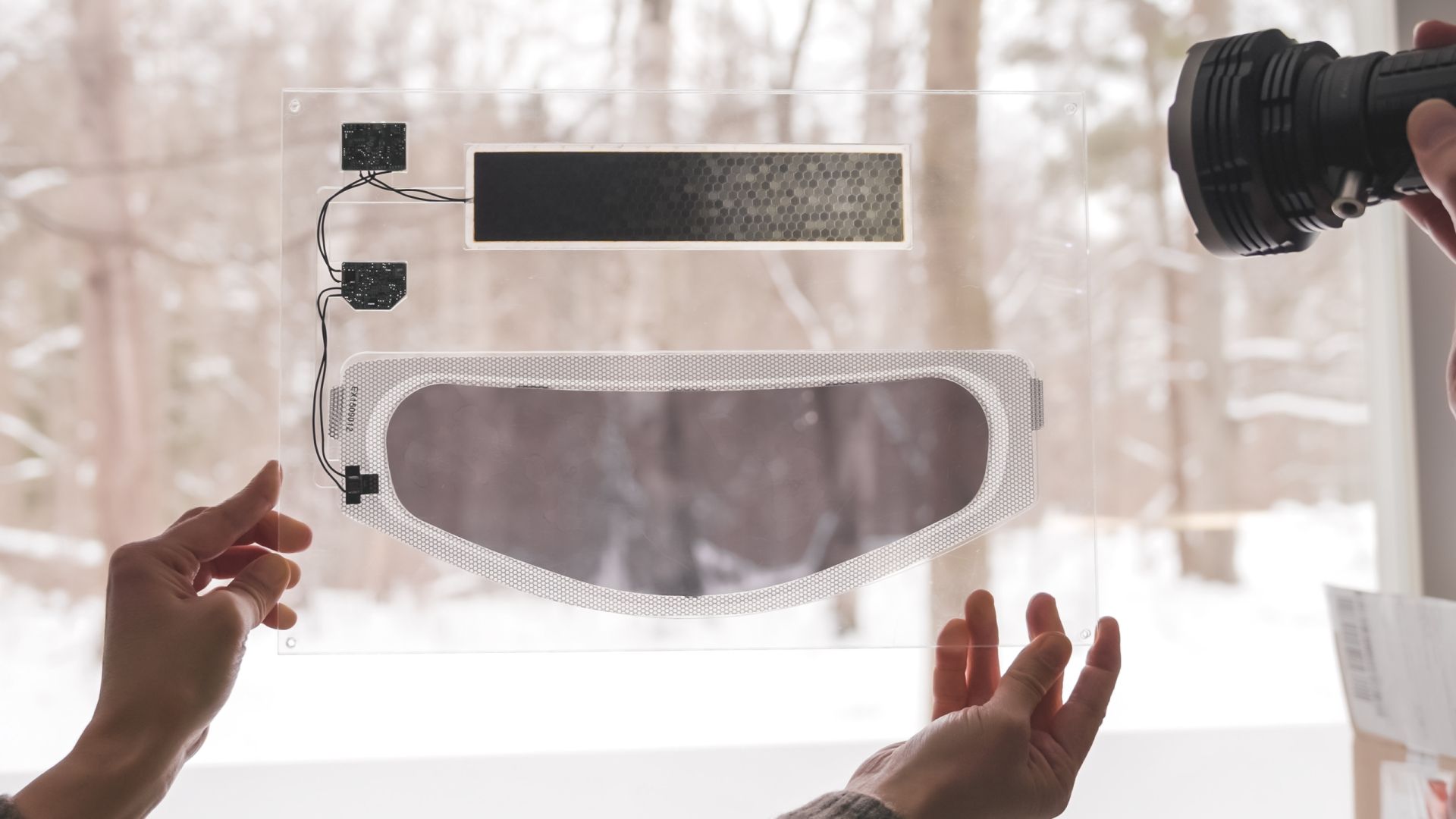Exeger’s solar cell converts all forms of light into clean, endless electrical energy. Powerfoyle eliminates or reduces the need for wall charging. It is 100% fossil free to generate electricity from the light that already surrounds us. With no wall charging the idle draw from chargers being left plugged in is also eliminated.
There are various initiatives for optimizing charging and charging timing. In 2022, Clean Energy Charging got headlines as it was built into Apple’s iOS 16 software and activated by default for users in the US (source: Washington Post). Broadly speaking, the idea is to automatically schedule device charging to times during the day when the carbon footprint of grid electricity is lower. While most people agree it is important to keep carbon footprint low, swirl was created by consumers that worried their phone would not be fully charged when they needed it.
We applaud all initiatives for reducing carbon footprint including Clean Energy Charging initiatives for the products that do not yet lend themselves to be charged by the light that already surrounds us. For all the many products that are good use cases for Powerfoyle, we think charging with solar cells should be plan A. With Powerfoyle you get 100% clean energy charging with none of the hassle or worries.
With no or limited wall charging, the need to produce and ship charge plugs or charging cables is significantly reduced or eliminated. Disposed of and unused chargers are estimated to represent about 11,000 tonnes of e-waste annually (source: European Parliament). This results in reduced costs associated with producing and shipping charging cables and plugs, as well as the waste and environmental implications that these accessories ultimately create.
As energy prices are causing an ever-increasing financial burden on households and businesses, energy independence and a decreased reliance on the grid is gaining attractiveness. By using the surrounding light as an energy source for electronics, consumers can have more freedom than ever – from grid dependence, from cords and replaceable batteries, and freedom to use their devices whenever and wherever they need to.
USE CASE: POWERFOYLE-POWERED HEADPHONES
A great Powerfoyle use case is headphones. Powerfoyle is the lower CO2 alternative already compared to wall charging and eliminating the USB cable. If you also eliminate a charger and the electricity consumed from a charger left idle in the wall, the carbon footprint equivalent (CO2 eq.) is 12 times lower.
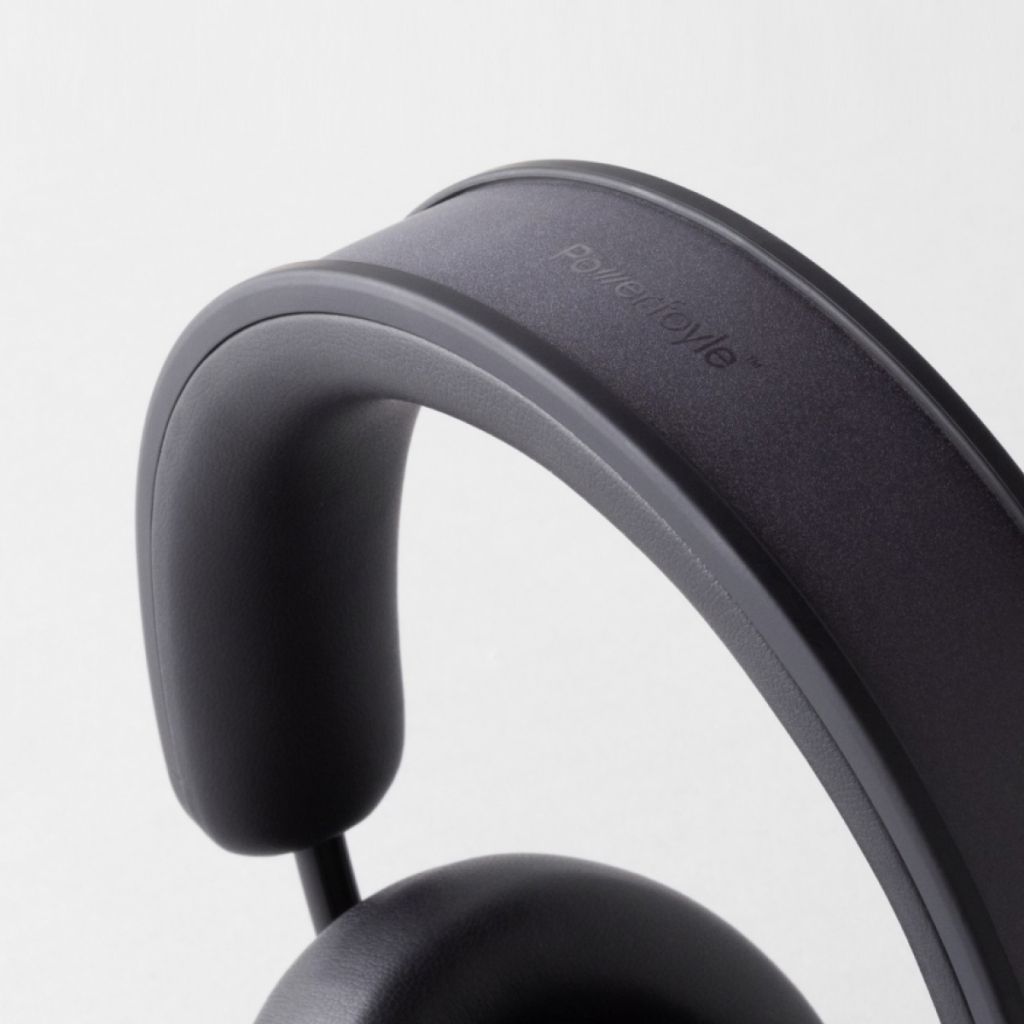
POWERFOYLE VS. CONVENTIONAL HEADPHONE CHARGING FOOTPRINT
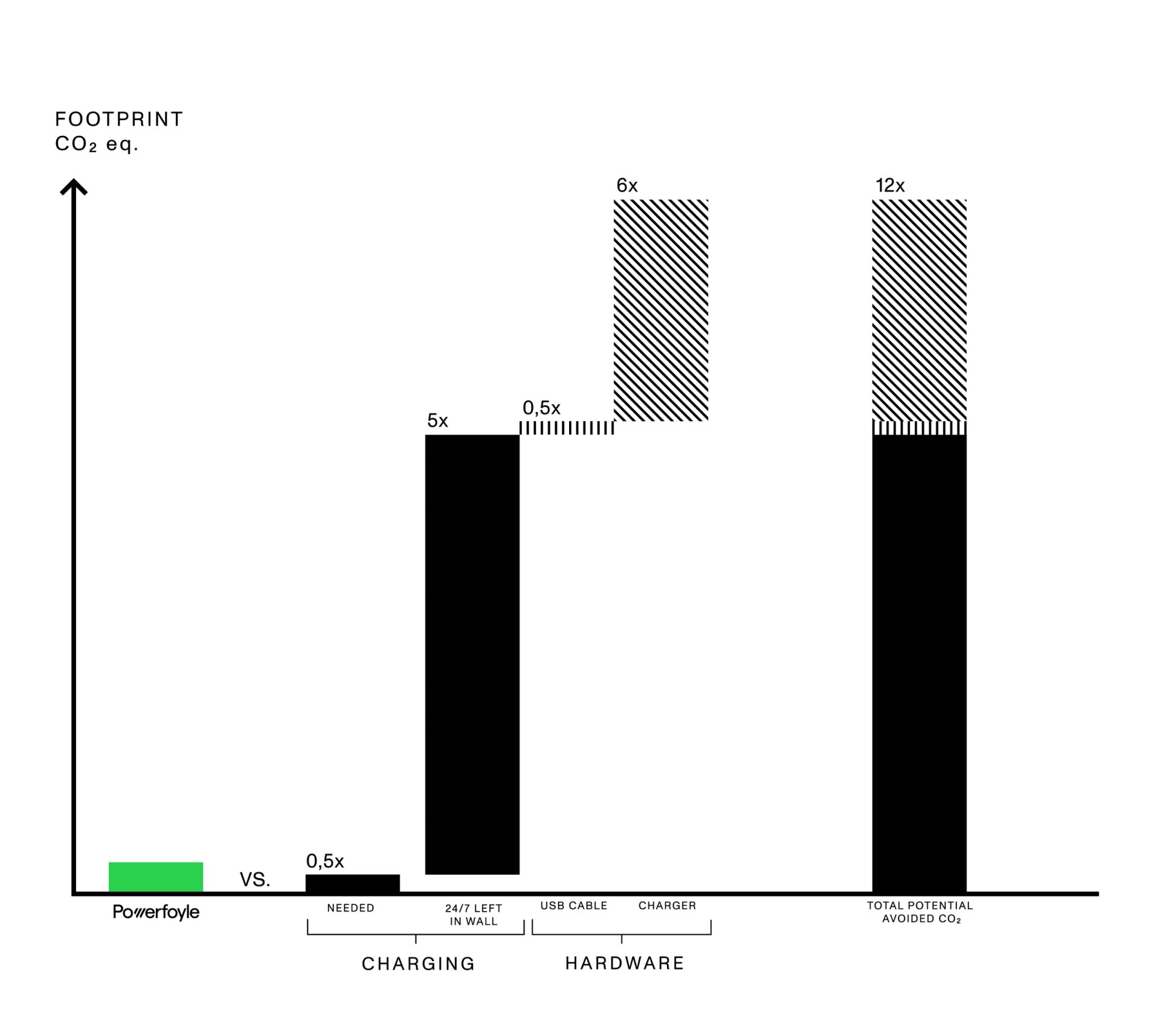
Climate impact of using a headband with Exeger’s Powerfoyle to charge a headphone for three years compared to the alternative of charging from the grid and including a cable/charger with the headphone.
POWERFOYLE VS. CONVENTIONAL HEADPHONE CHARGING FOOTPRINT

Climate impact of using a headband with Exeger’s Powerfoyle to charge a headphone for three years compared to the alternative of charging from the grid and including a cable/charger with the headphone.
A great Powerfoyle use case is headphones. Powerfoyle is the lower CO2 alternative already compared to wall charging and eliminating the USB cable. If you also eliminate a charger and the electricity consumed from a charger left idle in the wall, the carbon footprint equivalent (CO2 eq.) is 12 times lower.

Beyond wall charging, Exeger’s solar cell can also power products currently running on disposable batteries. Billions of batteries are produced every year and the production of these batteries represents a significant CO2 footprint. The environmental damage goes beyond CO2, disposable batteries make up a significant share of the household hazardous materials in America’s landfills where mercury and other toxins leak as they are crushed. Rechargeable batteries are a better option for the environment but is still a small share of total battery usage.
Powerfoyle has a broad range of possible application areas. When prioritizing what to focus on, environmental impact is a key criterion. Fortune Business Insights estimates that 50%+ of alkaline batteries are used to power consumer electronics devices, many of which could instead be powered by Powerfoyle.


Digging deeper into the Powerfoyle system, all current solutions include a battery that never needs replacing which is used to store the electricity generated by light. This for example enables you to listen to music also in the dark.
To ensure a minimum environmental footprint and optimal product performance Exeger collaborates with its partners and customers on the choice of battery. Together with its partners, Exeger is also experimenting with ways of eliminating even these batteries, e.g., using a supercap.
3,1 BILLION kg
CO2 eq. savings per year
if the full Stockholm I and II production is dedicated to hearing protector solar cells replacing disposable batteries as power source.
(Source: Exeger analysis 2023)
USE CASE: POWERFOYLE-POWERED REMOTE CONTROLS
Remote controls account for a staggering ~12% of alkaline battery consumption and each year, almost 700 million remote controls are sold globally (source: Fortune Business Insights). Remote controls are a product application that is perfectly suited for solar cell powering. Samsung estimated in 2022 that they alone would be able to eliminate 200 million battery exchanges if the remote controls they sold were solar powered (source: Samsung CES Keynote). With Powerfoyle, you don’t need to change batteries and the CO2 footprint is reduced.
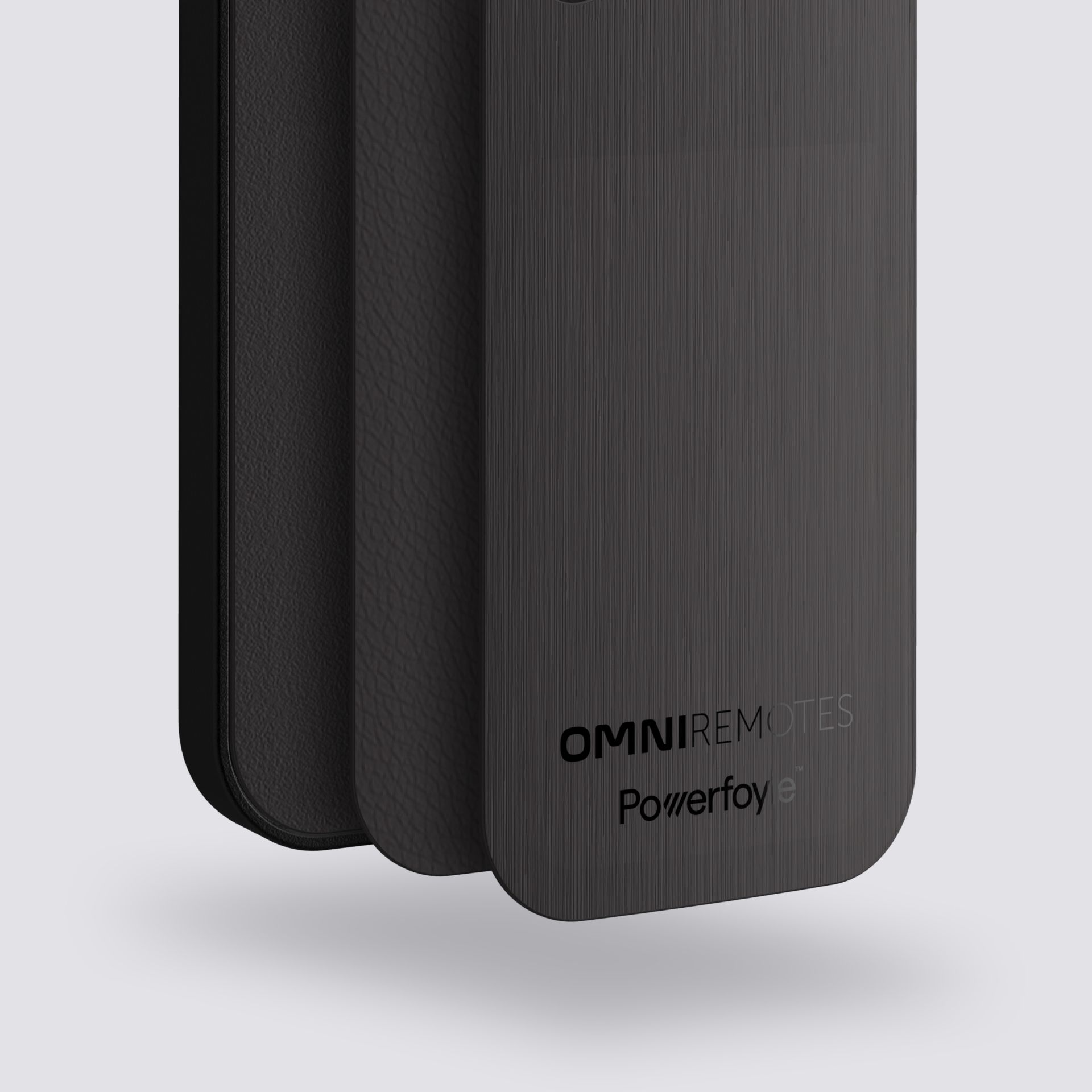
1+ BILLION
eliminated disposable batteries per year
if the full Stockholm I and II production is dedicated to remote control solar cells replacing disposable batteries as power source.
(Source: Exeger analysis 2023)
Different solar cell technologies have quite different usage areas. What most people associate with solar cells are installations on rooftops or fields for power generation. Silicon is an established technology for this use case. Powerfoyle on the other hand is the optimal choice for indoor and hybrid use cases.
With Powerfoyle you get a customized solar cell (shape, surface and beyond – read more in the design and integration section) to power devices for example in the consumer electronics, IoT or worker safety industries. For those familiar with technologies that have been available longer, a comparison may be interesting even if use cases vary. Already when founding Exeger, Giovanni Fili and Henrik Lindström agreed on a sustainability ambition to guide the innovation process that has generated Powerfoyle. They wanted to produce solar cells without toxic or rare earth raw materials. They also wanted to make durable non-brittle solar cells that continue to generate power for a long time. Guided by these principles, research and development at Exeger has addressed some of the sustainability challenges other solar cell technologies face.
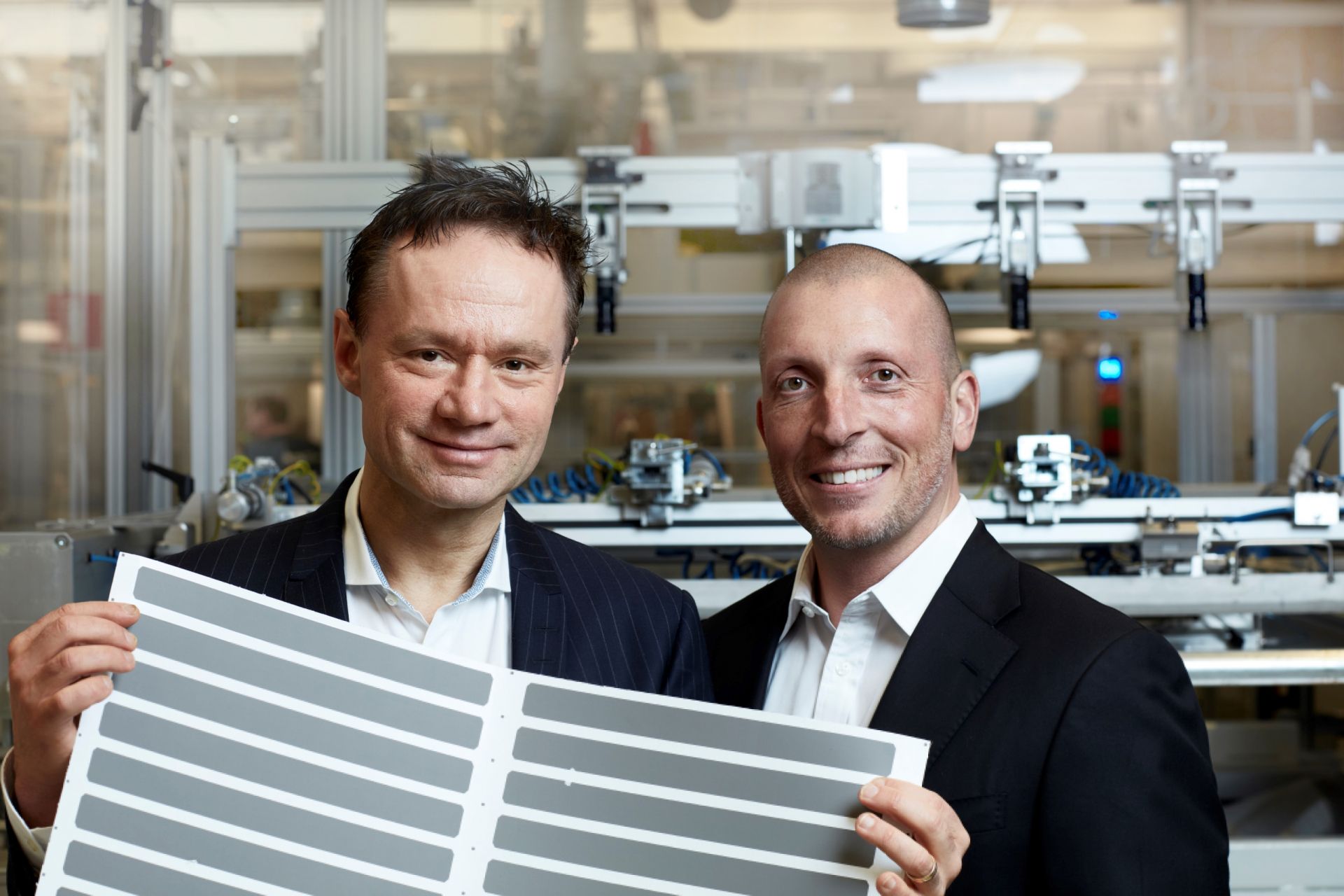
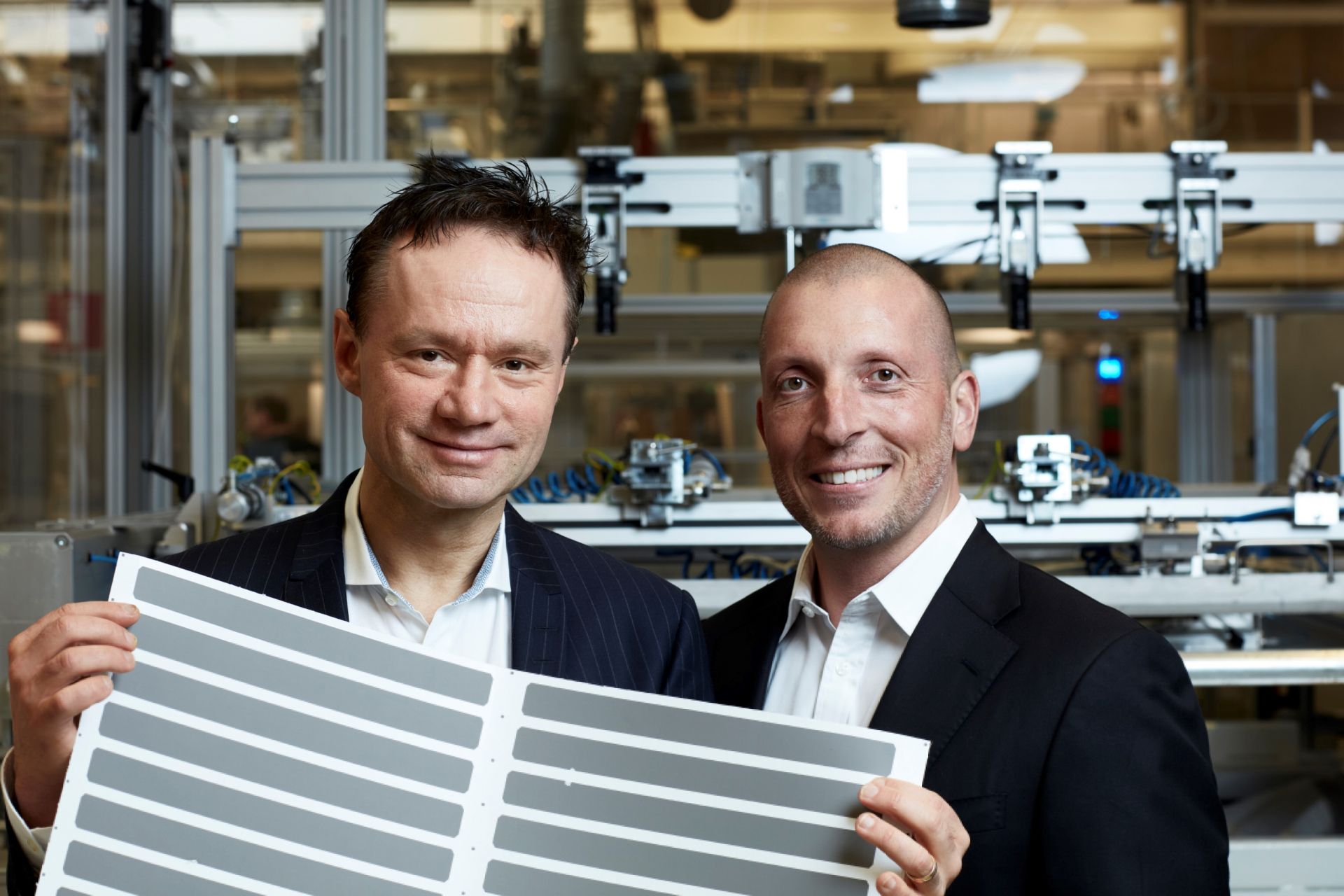
CTO Henrik Lindström and CEO Giovanni Fili
“Ever since we started out, we wanted to create something that would serve a real consumer need — something that is useful and can contribute to reducing the damage and strain we are putting on the environment due to charging personal electronics. Since then, we have developed — from start to finish — a unique piece of technology that has near-endless applications.”
Giovanni Fili, CEO Exeger
Exeger’s solar cell is made from abundantly available and environmentally friendly materials. It does not contain any rare earth or conflict minerals.
Exeger has a rigorous supplier selection process requiring suppliers to meet the highest global standards of environmental and social impact. Our Supplier Code of Conduct outlines our ambitious minimum requirements for environmental practices and beyond. The Supplier Code is based on the Ten Principles of the UN Global Compact as well as part of the Responsible Business Alliance Code of Conduct and is applicable for all suppliers of goods and services to Exeger regardless of where the supplier is based.
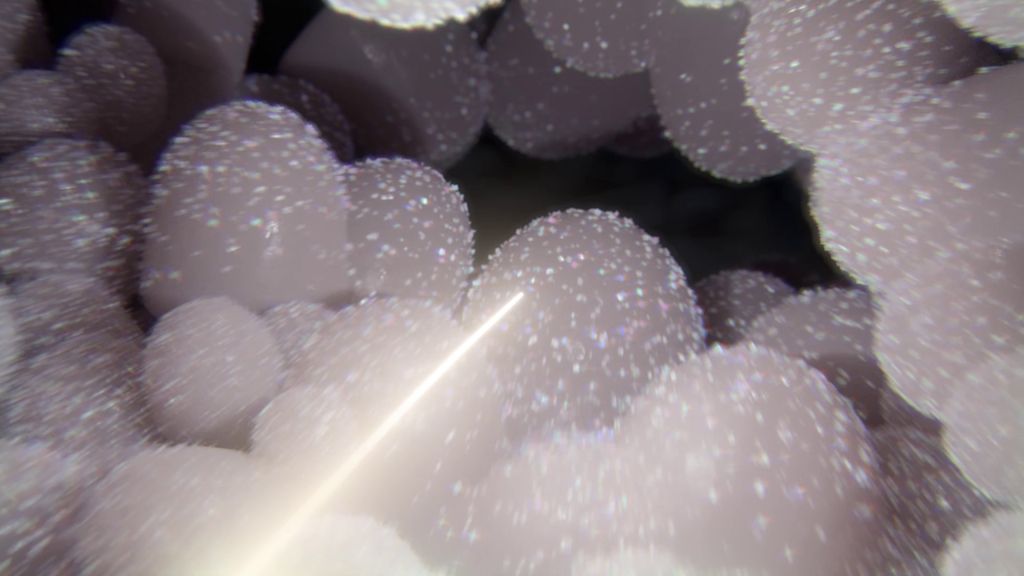
Exeger is ISO 9001 and 14001 certified. The Life Cycle Assessment (LCA) is performed in line with ISO 14040 and 14044 guidelines. The global sustainability consultant Anthesis has verified the LCA. The Powerfoyle cells are custom made for each product, so the exact CO2 footprint varies. Exeger is in the beginning of industrializing production and the footprint will decrease further when we operate at increased scale.
Powerfoyle is recyclable and non-toxic. Since the solar cell is integrated into products, we work with our customers to identify the best ways to recycle the device.
At Exeger, we design for durability. The solar cell undergoes extensive testing to ensure longevity and resistance to wear.
Exeger only enters partnerships with producers of high-quality products. Even so, the expected lifetime of the Powerfoyle solar cells has always surpassed any current product guarantee time. Exeger wants to be part of a movement where products last longer and frequently engage in discussions with partners on how to achieve this goal. Exeger’s solar cell increases the lifetime of batteries in products through the constant lower intensity light charging, which in turn prolongs product life.
We welcome the current trend of reparability (e.g., as manifested by the State of New York Digital Fair Repair Act) and our long-term vision to enable consumers to repurpose the solar cell once the product it was originally integrated into has reached end of life.
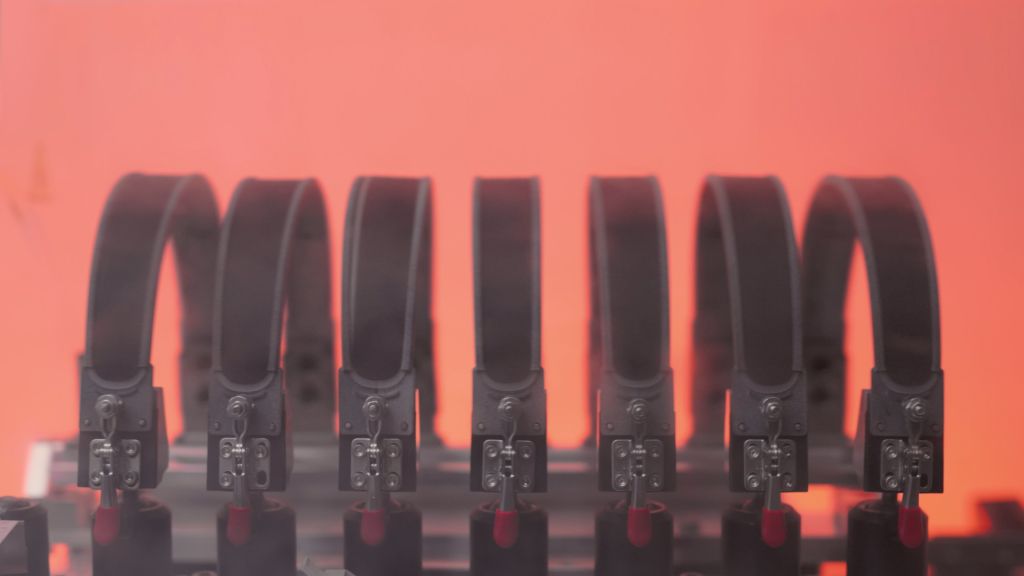

Exeger runs two factories, Stockholm I and Stockholm II, in the capital of Sweden. The production runs on 100% renewable energy. Both factories are built inside existing structures to minimize environmental impact. This is one example of how Exeger expands the business while seeking to keep the footprint as low as possible.
Exeger generates no toxic emissions into air or water. The Stockholm II factory has fully approved environmental permits, adherent with the strict EU regulation. This second factory is allowed to operate next to residential buildings, and Stockholm I is adjacent to a natural reserve. We refer to this as “Urban factories”, production that is so clean that it can be done close to people. Exeger’s ambition is to set an example for what future-proof production looks like and shape the modern industry.
Exeger is ISO 9001 certified since 2018.
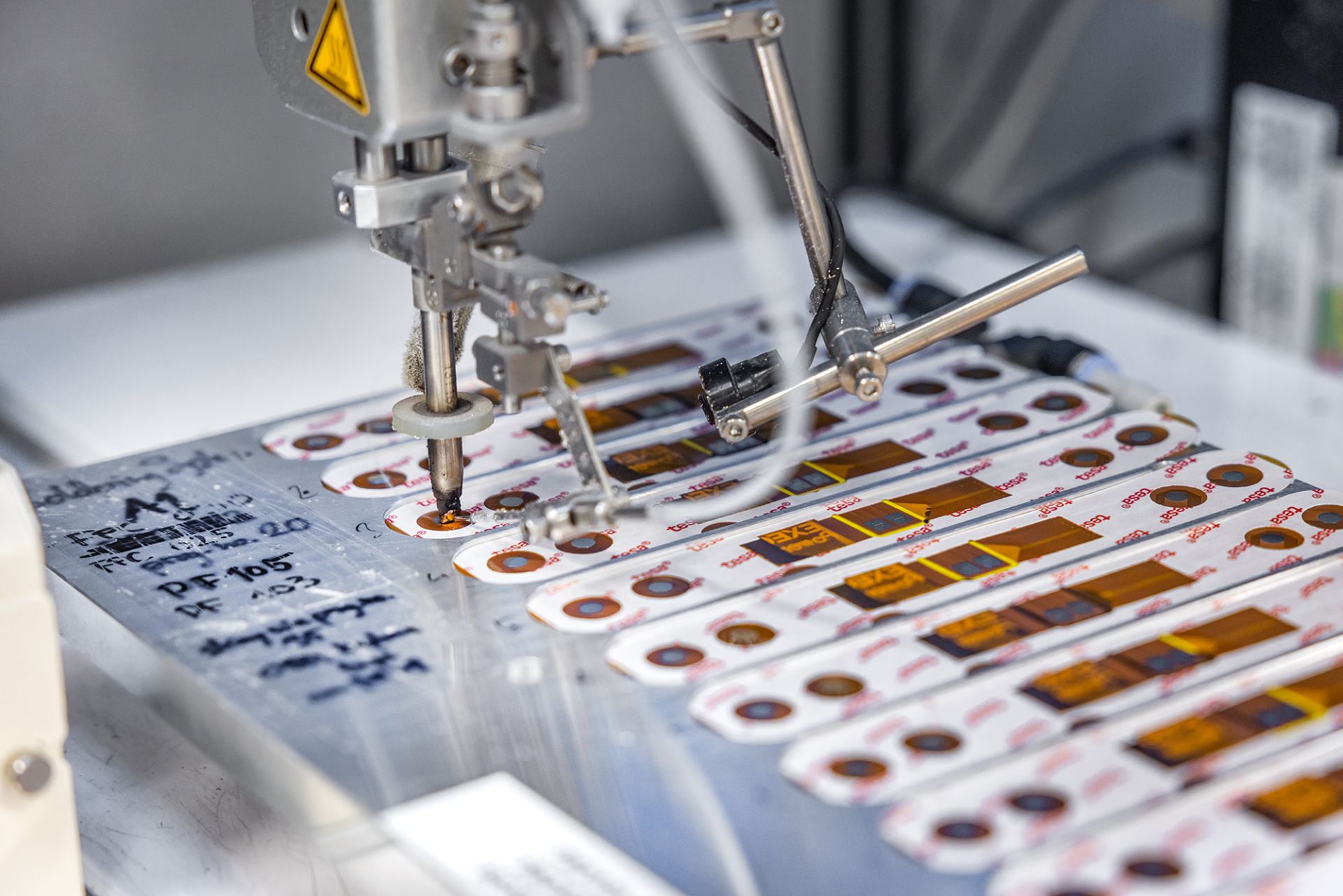
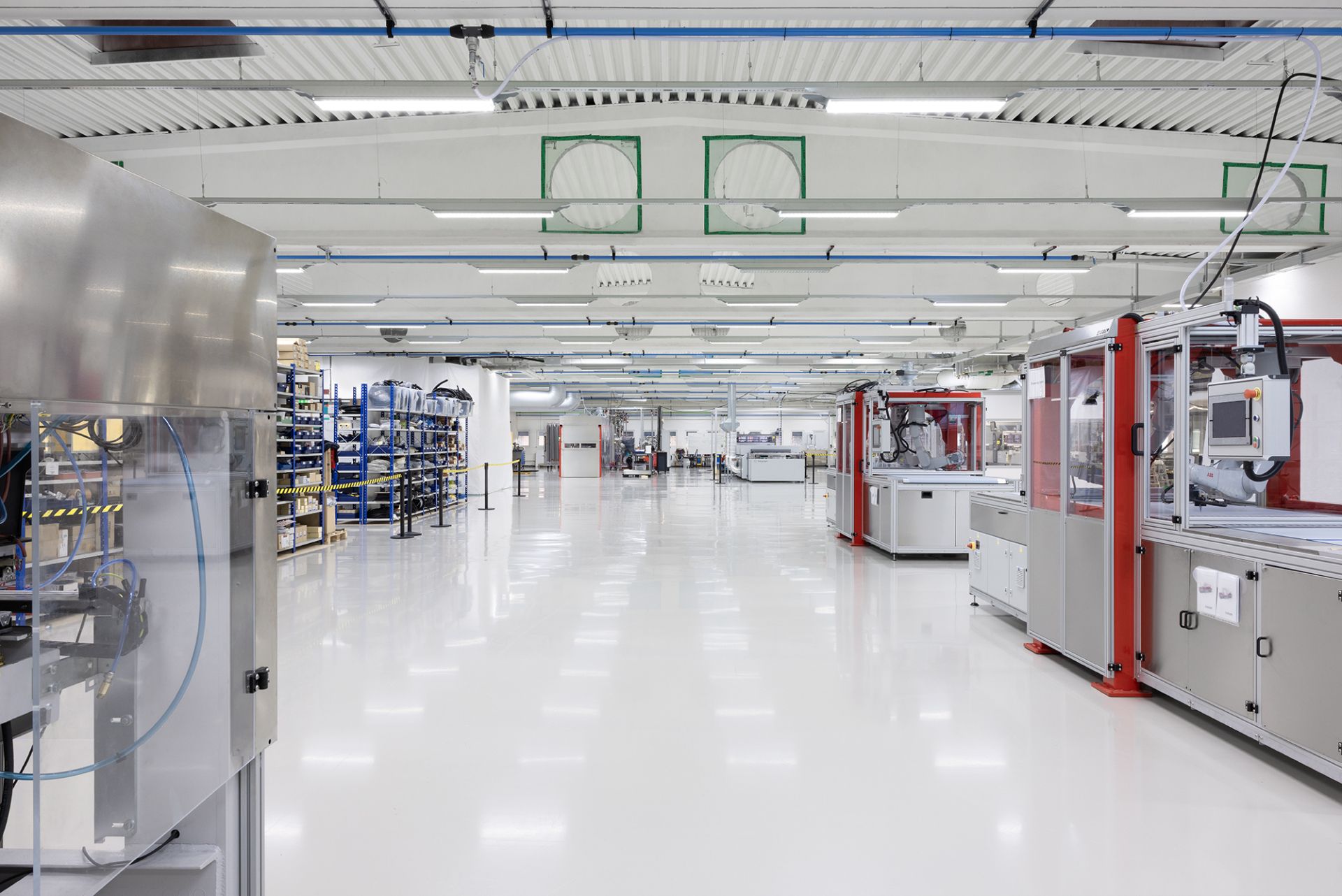
To be a successful business today, a commitment to sustainability is imperative. Whether the goal is carbon neutral operations and products or net zero greenhouse gas emissions, it’s critical for business leaders to have sustainability at the center of corporate values and initiatives.
By enabling devices and product categories that are powered by clean, endless energy, Exeger can be a significant contribution in helping companies reach their sustainability targets.
Powerfoyle gives partners access to unique and concrete sustainability claims. End-consumers associate the Powerfoyle brand with a quality approved environmentally friendly solar cell and are willing to pay a premium for this. Retailers are more willing to dedicate space to green products.

A promising progression has been made globally towards including sustainability at the center of corporate values, visions and goals. Noteworthy examples from global consumer electronics companies include:

“Amazon is using its size and scale to lead and make a difference in tackling climate change, which is why they are committed to reaching net zero carbon emissions by 2040.”
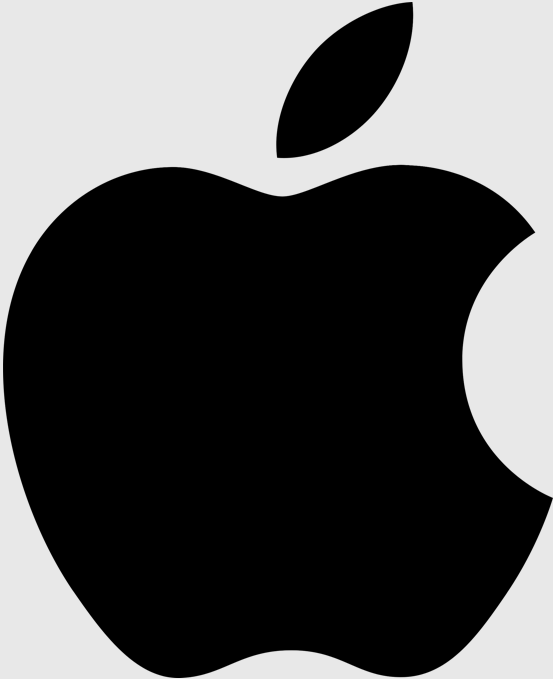
“Apple commits to be 100 percent carbon neutral for its supply chain and products by 2030”
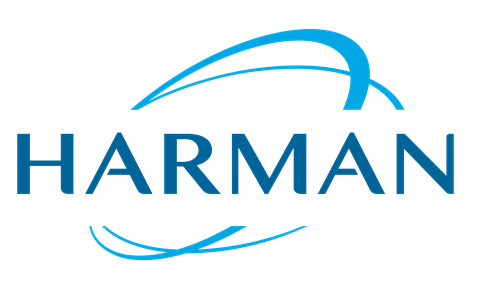
“Sustainability is a critically important focus area for HARMAN and is deeply linked to our core values and DNA as an organization. HARMAN is committed to achieving carbon neutrality across Scope 1, 2 and 3 by 2040.”
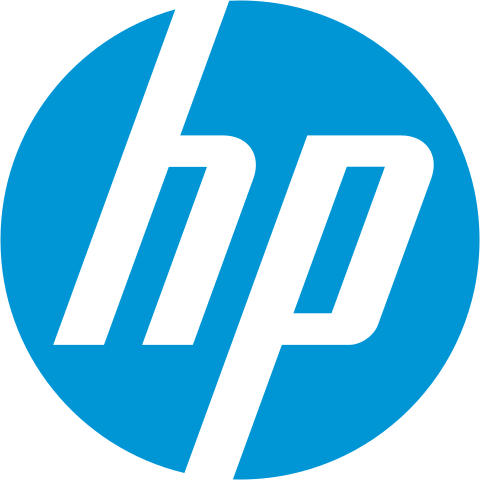
“HP’s […] goals to achieve net zero greenhouse gas (GHG) emissions across HP’s value chain by 2040 and to reduce HP’s absolute value chain GHG emissions by 50% by 2030 compared to 2019.”

“Logitech expands beyond carbon-neutral operations to carbon-neutral products, […] commits to maintain carbon neutral gaming products and intends to expand the certification to other product categories in the future.”

“Siemens’ goal is clear: all production facilities and buildings worldwide are to achieve a net-zero carbon footprint by 2030.”
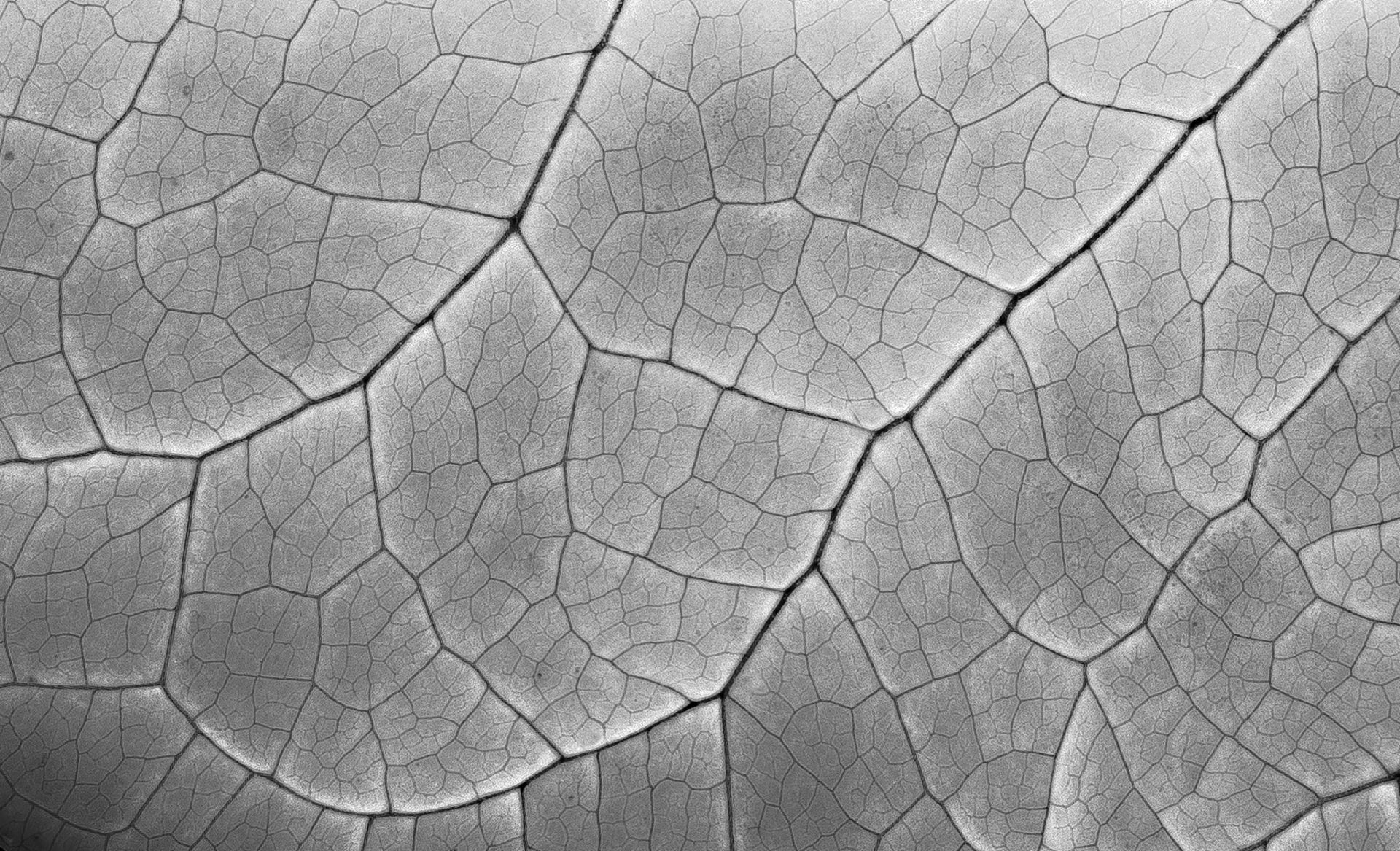
To limit global warming, a multitude of measures are required. At Exeger we work hard every day to do our part.
Given that our groundbreaking solar cell innovation can be part of the solution, we feel it is our responsibility to scale it. For the benefit of everyone.
